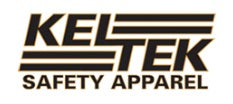Workwear
When Should I Replace My Work Gear?
Work Boots
Everyone works in different conditions and has different job demands which leads to different levels of work boot wear and tear, so there isn't a set amount of time of when you should replace your safety boots. Some folks might work long hours in extreme conditions, and as a result they'll need to replace their safety footwear more frequently. Others might work part time indoors for example, and won't see much wear and tear on their safety shoes.
It's always a good idea to take a good look at your work footwear after a minimum of 6 months of usage. Here is a basic guide of what to look for during your inspection:
- Is the protective toe cap showing through the boot?
- Are the bottom treads worn down? If so, do you notice yourself slipping and sliding when you walk around?
- Does your footwear have any holes, rips, or tears?
- Have any seams become detached inside or outside your boot?
- Do they feel less comfortable or supportive than they did before?
If you've answered YES to any of the above questions, it's likely time to look at purchasing a replacement pair of work boots.
Work Clothing
Periodically replacing your work clothing when it's no longer able to fulfill it's functions is necessary to ensure your safety and protection while at work. However, there is no set amount of time of when you should replace your work clothing. Some people may work long hours in extreme conditions, while others may work part time indoors. The amount of wear and tear accrued over time on work clothing will be more for some people, and less for others.
It's always a good idea to take a good look at your work clothing after a minimum of 6 months of usage. Here is a basic guide of what to look for during your inspection:
- Has your garment's reflective strip become damaged or worn out?
- Does your garment have any holes, rips, or tears?
- Is your garment excessively dirty, and the dirt won't come out?
- Has your garment's fluorescent fabric faded? Has the color become dull?
- Is your garment uncomfortable to wear for extended periods?
If you've answered YES to any of the above questions, it's likely time to look at purchasing some replacement work clothing.
What's the difference between steel toe, aluminum toe and composite toe safety footwear?
A lot of customers ask us for steel toe footwear, because that's what they think of when they need safety footwear. However, aluminum and composite materials offer the exact same CSA protection as steel, just with different properties to them.
- Steel Toe: The original classic option. Still a great option for many different workplaces. However, steel holds the cold longer and may make feet cold if working in cold conditions.
- Aluminum Toe: Lighter than steel and may have a slimmer profile.
- Composite Toe: Usually the lightest option, up to 30% lighter than steel toe. Tends to be a thicker material, which sometimes results in bulkier safety footwear.
Plus - We Carry Top of the Line Brands!
We carry high quality industry proven brands, field tested by professional utility workers.
Work Boot Safety Standards
-

The CSA Green Triangle indicates sole puncture protection with a Grade 1 Protective toe to withstand impacts up to 125 joules. Sole puncture protection is designed to withstand a force of not less than 1200 Newtons.
-

The CSA White rectangle with orange Greek letter omega - indicates soles that provide resistance to electric shock. Such certified footwear contains a sole and heel design assembly that, at the point of manufacturing, has electrical insulating properties to withstand 18,000 Volts and a leakage current not exceeding 1mA for 60 seconds.
-

The Metatarsal Protection symbol indicates protection for the metatarsal region of the foot when working around heavy objects. Toe protection is required for all metatarsal protective footwear.
-

The CSA Blue Rectangle indicates Grade 1 protective toe without sole puncture protection. Grade 1 toe withstands impacts up to 125 joules.
Work Clothing Safety Standards
-

CSA Class 2, Level 2 garments provide moderate body coverage and superior visibility, and more coverage than Class 1. Apparel has full coverage of the upper torso (front, back, sides, and over the shoulders) and includes bib-style overalls. Stripes\/bands are composed of retroreflective or combined performance materials. Examples of jobs that might require Class 2 apparel: school crossing guard, roadway construction, utility, forestry or railway workers, surveyers, airport baggage handlers and ground crews, roadside vehicle maintenance workers, members of law enforcement, and high-volume parking and\/or toll gate workers, etc.
-

Type R offers a Performance Class 2 and Class 3—garments specifically designed for use on roadways—and is often the choice of other construction and transportation applications due to the high presence of moving vehicles and equipment. Because Type R features more fluorescent background material and additional retroreflective square inches, it is better suited for environments with higher levels of moving vehicle and equipment traffic. For workers in the right of way of a roadway, it’s required by federal law. In addition to vests, T-shirts, sweatshirts and jackets are widely available in Performance Class 2 and Class 3.
-

Class 1: provides the lowest recognized coverage and good visibility. Apparel must consist of a basic harness or stripes\/bands over the shoulder(s) and encircling the waist. Examples of jobs that might require Class 1 apparel: Workers directing vehicle operators to parking or service locations, workers retrieving shopping carts in parking areas, workers in warehouse operations, Right-Of-Way or sidewalk maintenance workers, and workers in shipping or receiving operations, etc.
-

Type O features a single Performance Class (Class 1) and is intended for off-road use, often indoors or more controlled environments. Who Benefits: Among others, workers retrieving shopping carts, working in warehouses and factories or extracting\/refining oil & gas.






